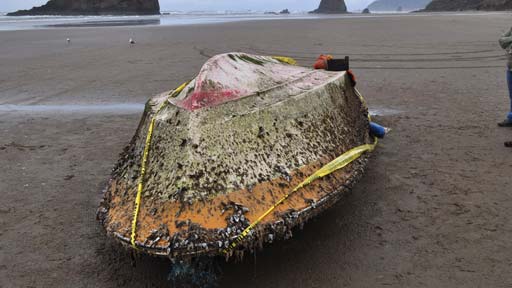
Years after a massive earthquake and tsunami devastated Japan’s Tōhoku region, we’re still seeing the effects, even here in the United States. Debris displaced by the storm have been washing up on U.S. shores, bringing on board a host of Japanese sea creatures.
Nearly 300 species of invertebrates and fish have been turning up on beaches in the Pacific Northwest — and they’re still coming. By 2017, researchers had counted at least 634 pieces of garbage from Japan laden with animals arriving in Oregon and Washington, according to a study published in the journal Science that year.
They’re likely to keep coming too.
“What we’re waiting for is whether or not the spring 2019 pulse brings to North America the same arrival of Japanese tsunami marine debris and living species that it has for the past seven years,” Williams College professor Jim Carlton, who co-authored the study, told Smithsonian.com.

What makes the more than 4,350-mile journey even more impressive are the harsh elements these creatures would have been exposed to as they floated on the open sea. The fact that they were not only able to survive—but reproduce—is thanks to all the plastic in our junk, which makes it almost indestructible.
Researchers are studying coastal areas closely to see if the newcomers will become invasive species, but it’s too early to tell. It can take years after a species arrives in a new habitat before they start taking over the ecosystem, once they’ve reproduced and thrived due to a lack of natural predators.
Even if the creatures that have arrived so far turn out to be harmless, the researchers say this phenomenon is likely to repeat itself in other places. Future natural disasters, intensified by climate change, could introduce garbage into the ocean, sending foreign species all across the world – and ultimately increasing the chances of species invasion.




